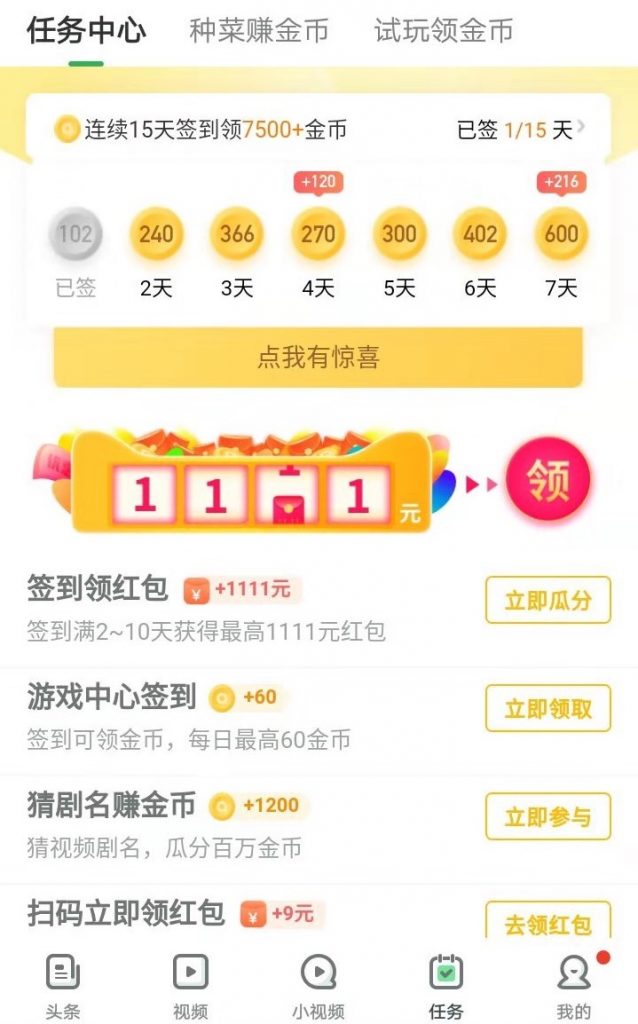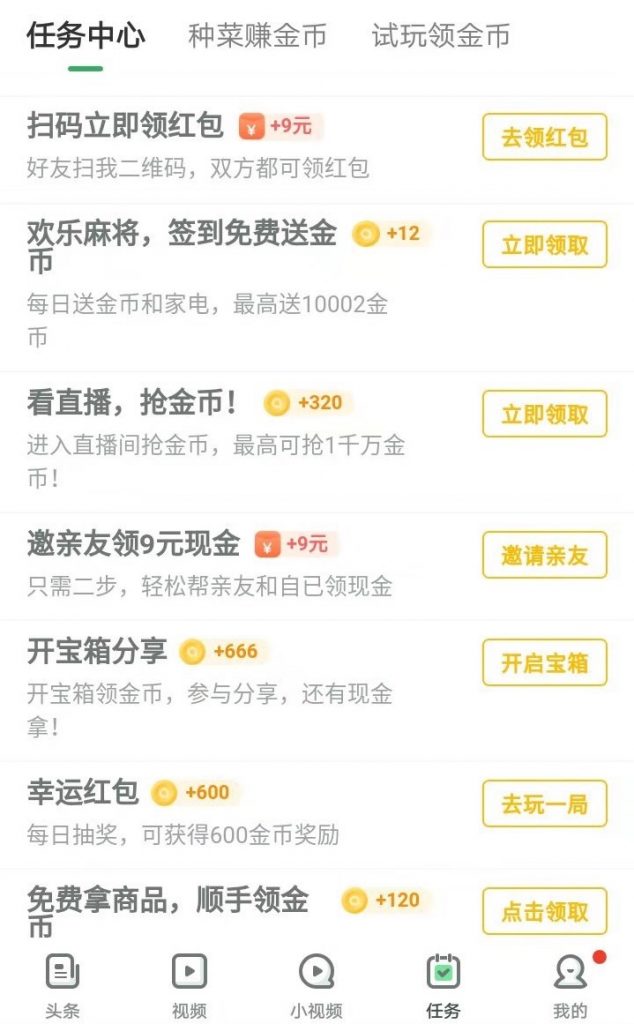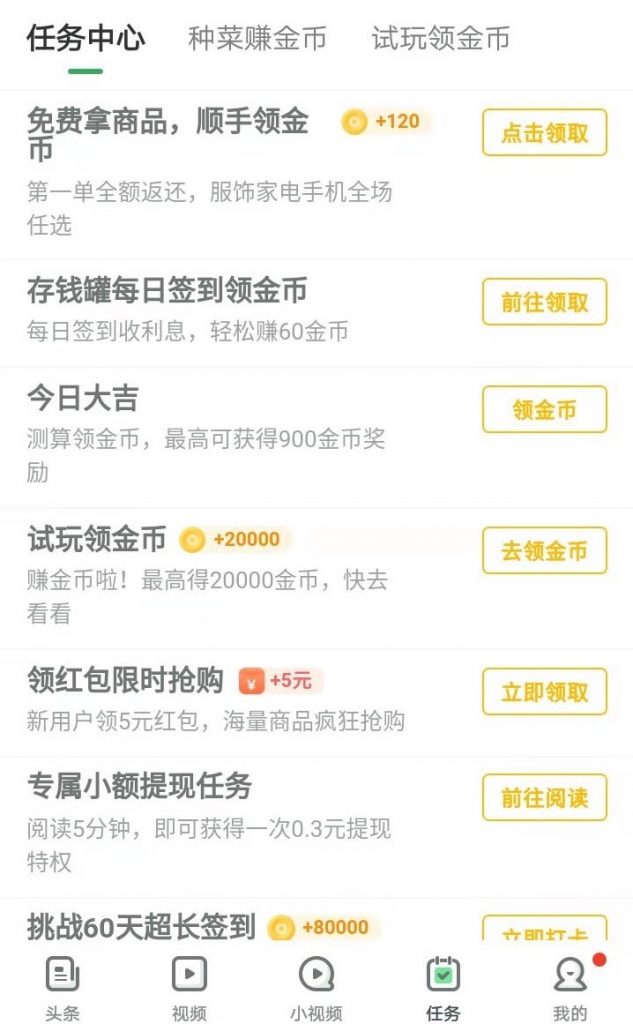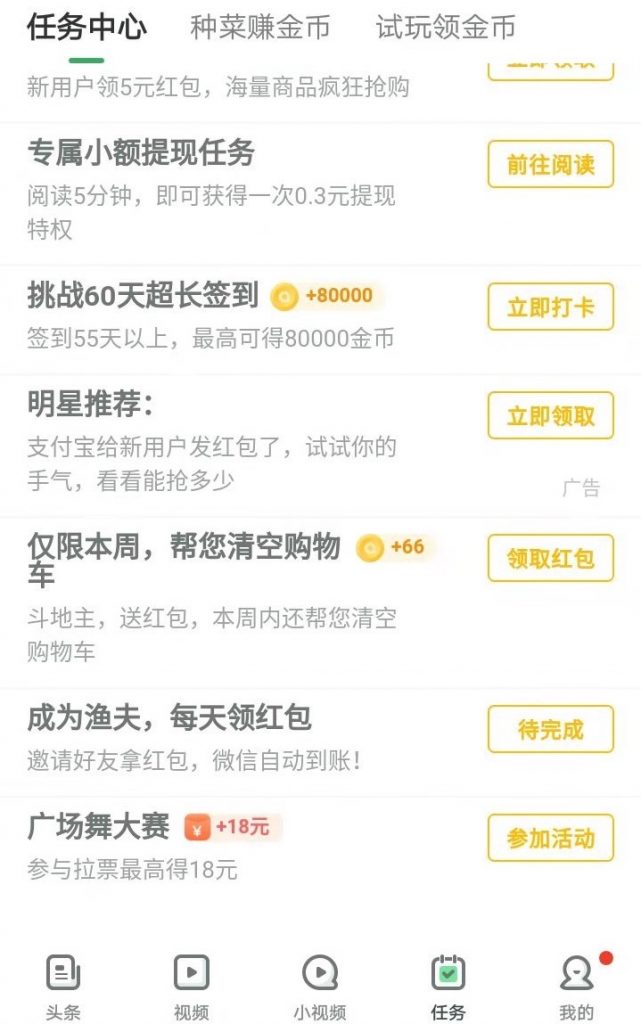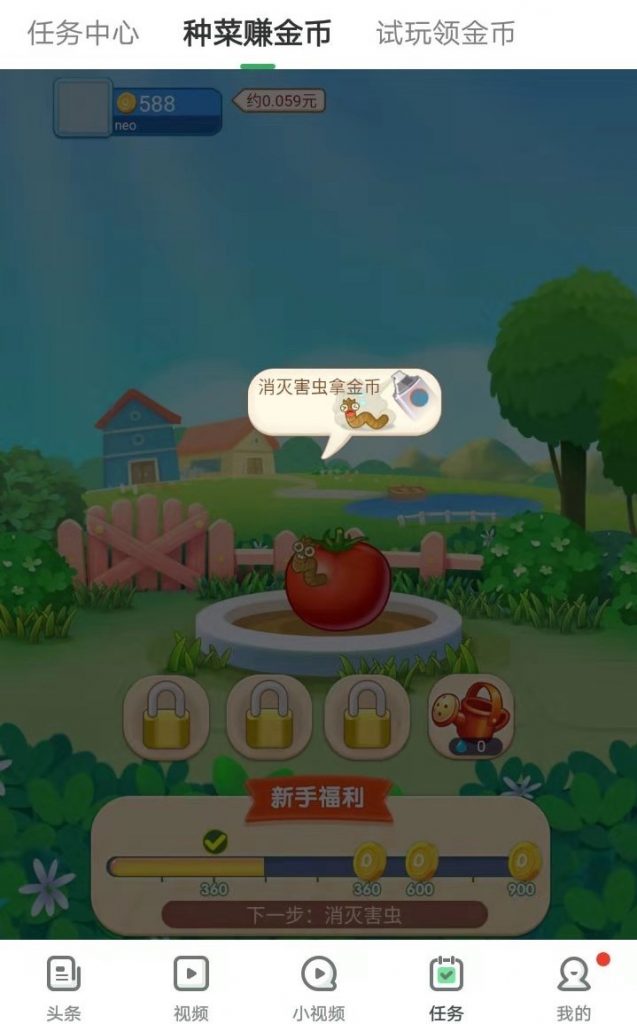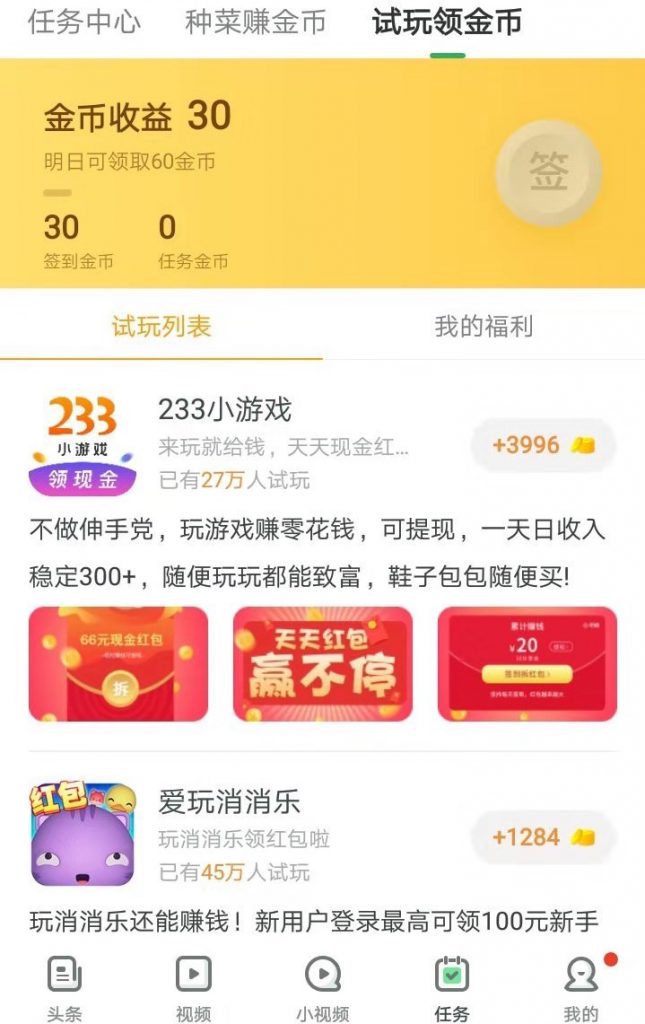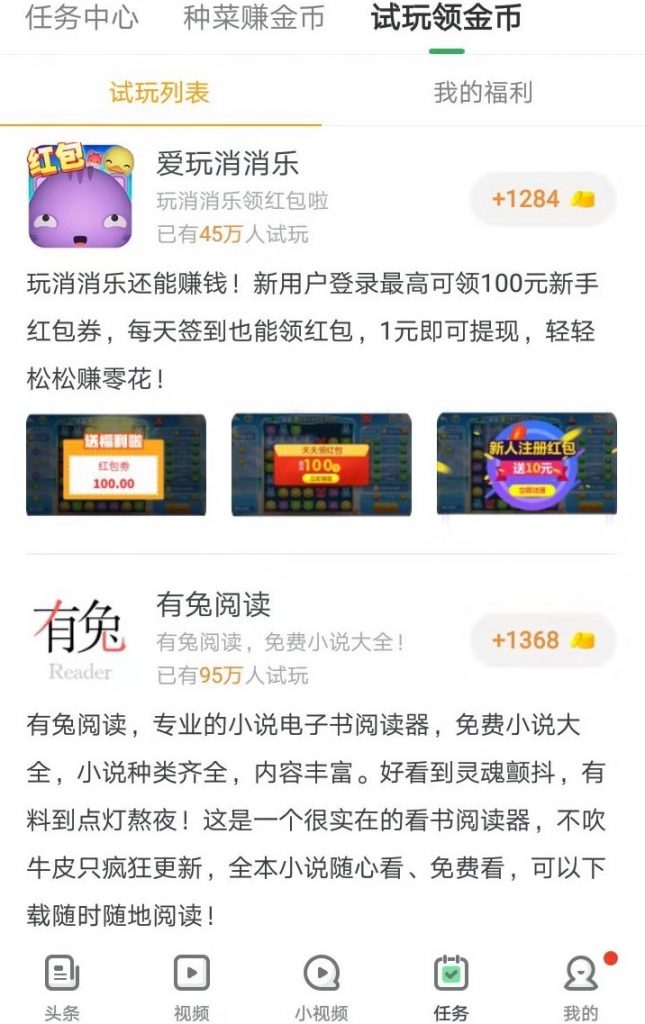Qutoutiao - a typical case of points strategy improving user growth and user dependence
As an information product, Qutoutiao failed. But as a growth product, Qutoutiao is successful. Because the main purpose of its users using it is not to read information, but to make money. What makes all this happen is Qutoutiao’s point system.
Qutoutiao allows users to make money through a points system, which also achieves the purpose of user growth and user dependence on Qutoutiao.
In fact, it is not new, but very classic.
From the early days of the PC Internet era to the present, there are many successful cases that rely on points strategies. Including myself, there have been successful products that relied on the points strategy.
The points strategy also derives the virtual currency system, user growth system, etc. This is nothing. More importantly, in order for virtual currency to no longer just represent the value of a certain platform, but to become a currency in a practical sense, the blockchain has been dug out of the garbage heap. Out of Bitcoin.
Here, let me first share the design principles of the points system that I summarized more than ten years ago, in 2004. At the time, I was running my own website.
1. Consumption rules
Integral what's the use?
This is what drives users to accumulate points. It is also the key to the entire points system. If this is not done well, users will not be driven. The entire points system will be in vain.
2. Accumulation rules
What do I need?
User-generated content, user behavior data, sharing and communication, user activity, user interaction, user usage time, etc.
The user gives me what I need, and I give the user the corresponding points.
3. Consumption rules determine accumulation rules
The driving force behind the role of points determines how complex the accumulation rules can be and how high the rewards can be.
The greater the impact of points on users, the more complex tasks users can perform, and the lower the points they can earn.
It can also be said in another way that the strength of the driving force determines the behavioral costs and benefits of user behavior in the accumulation rules. The stronger the driving force, the higher the behavioral costs of user behavior that accumulate rules, but the lower the benefits.
After so many years, many friends have actually concluded similar principles and methodologies. Basically the same.
Then, let’s look at Qutoutiao.
1. Target users
Qutoutiao’s target users are very clear: sinking population.
2. Forces driving growth
make money.
For this point, please refer to my other blog article: What do sinking users lack?
It can be said that making money is enough to drive target users to do many things. How much money can be earned determines the points accumulation rules, the behavioral cost of user behavior and the number of points earned.
In fact, Qutoutiao cannot make a lot of money for each user.
So, we can look at its integration rules.
Watch, watch duration, share, check in, play various simple games, etc.
You may have discovered that the behavioral costs of these user behaviors are very low. For users, if they use it casually and click twice, they will make some money, so why not do it.
If the user behavior cost of these rules is high, it will not drive or trigger user participation and usage. Unless the final benefits are so high that users find it worthwhile.
3. Rules and Strategies
Qutoutiao’s points system mainly revolves around three aspects.
Fission propagation, user usage time, user dependence.
1. Fission propagation
- Fission propagation in offline scenes:
Scan the QR code to receive red envelopes immediately: If my friend scans my QR code, both parties can receive red envelopes.
Sinking areas, rural areas and county towns. People often have relatively close relationships with each other, and there are many scenes of offline chatting and visits. Scanning the QR code to receive red envelopes fits these scenarios perfectly.
- The fission propagation of online scenes
Invite relatives and friends to receive 9 yuan in cash: In just two steps, you can easily receive cash for relatives, friends and yourself.
Targeting the family and friend relationship chain of the sinking population.
Become a fisherman and receive red envelopes every day: invite friends to receive red envelopes, and the red envelopes will be automatically credited to your account via WeChat.
Maximize communication based on relationship chains.
Square Dance Competition: Participate in the canvassing and get up to 18 yuan.
Utilize fission propagation of synergistic relationships and interest relationships.
Qutoutiao’s points system mainly utilizes the law of interest and the law of synergy in terms of fission propagation. You can refer to my blog post:
2. User usage time
- Redeem points for reading time
You will get certain points every time you read an article/watch a video for a certain length of time. This strategy is very effective in increasing user usage time.
- Mini games extend user usage time
Users play mini-games in order to make money, and playing mini-games takes a lot of time. For example, cultivation games like growing vegetables are very time-consuming. As a result, the user's usage time is increased.
3. User frequency of use
Increasing users' usage frequency will not only directly increase retention, but is also an important aspect in cultivating users' usage habits and user dependence.
Qutoutiao’s points system mainly embodies the following strategies in terms of increasing user usage frequency:
- periodic reward strategy
Sign-in, continuous sign-in rewards, daily draws, daily calculations and other periodic reward strategies
- Periodic event handling strategy
In a cultivation game like growing vegetables, there are a large number of periodic events that need to be processed. Only by processing these events periodically can the final results and rewards (vegetables) be obtained.
In this way, if the user wants to get the final result (vegetables), he can only open the vegetable planting game every now and then, water the vegetables, get rid of pests, etc.
Of course, Qutoutiao's points system not only allows users to get the final results and rewards (dishes), but also adds small rewards to almost every user behavior (such as pest control). This further increases the motivation for users to deal with these events periodically.
4. User usage depth
All point strategies can be seen as strategies to deepen user usage. Especially the many gamified rules and mini-games.
5. User dependence
User dependence is ultimately reflected in the frequency and depth of use. Frequency of use and depth of use have been mentioned above. Here I would like to mention the basic strategies of Qutoutiao’s points strategy in terms of user dependence.
(1). Sending - once you come, don’t even think about leaving.
Give first if you want.
This has been an effective strategy.
What is given is money, and what is taken away is user dependence.
As soon as a new user comes in, points will be given directly (), and in many growth products and time nodes, there will be various forms of giving, some will give points directly, and some will give them in the form of winning prizes.
However, there is one thing here: money cannot be withdrawn until a certain amount is reached.
For new users, if they receive some money as soon as they join, they will naturally have a certain motivation to accumulate it to the point where they can withdraw cash. Then, we will start using Qutoutiao according to the points rules.
For old users, receiving free money from time to time when using Qutoutiao is also an incentive, giving them more motivation to use Qutoutiao to accumulate points and withdraw them. Just like when we usually do something, constant small incentives and small achievements can make most people stick to it.
This creates a layer of user dependence.
On this basis, when users regularly use Qutoutiao, they will form usage habits, thus forming another layer of user dependence.
(2) Gamification - you have many ways to make money
Qutoutiao’s point system introduces many gamification elements, and even directly introduces games. On the one hand, it greatly strengthens the methods and channels for users to obtain points. On the other hand, it also greatly improves user participation, communication and retention.
The deepening of participation is also an important aspect in forming user dependence.
(3) Behavior feedback - you will be rewarded if you move
Qutoutiao’s point system adds rewards to almost all major user behaviors. Each reward will be fed back to the user in real time and reflected in the total points.
This can greatly motivate users to use Qutoutiao.
For behavioral feedback, please refer to my other blog post:

关注我的微信公众号
